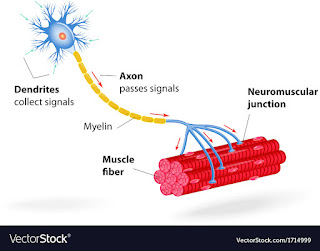The need to keep muscles healthy
Physical exercise helps to prevent the loss of muscle mass associated with aging. Sarcopenia is the loss of muscle mass, muscle strength and function (1). When sarcopenia progresses due to a sedentary lifestyle and poor nutrition, the quality of life is affected. The risk of falls, fractures and hospitalizations increases. Falls in seniors lead to greater healthcare cost; millions of dollars are spent every year in America due to falls (2).
Strong muscles are crucial to
support the health of bones. (The need to keep bones healthy will be the focus
of a future entry). Sarcopenia is associated with chronic inflammation. The
good news is that physical exercise can counter the effects of inflammation on
muscle.
A new study published by Science
Advances found that exercise helps muscle cells to counter chronic inflammation
(3). Researchers at Duke University used muscle cells in the laboratory to
investigate this. They exposed muscle cells to chronic inflammation by using
interferon gamma, which leads to muscle wasting and weakness. After evaluating
how interferon gamma molecules promote the inflammatory pathway in muscle cells
they applied electrical stimulation to mimic exercise on the fibers. They found
that exercise stimulation inhibits inflammation on the muscle cells, opposing
the effects of interferon gamma.
Sarcopenia is not only associated
with aging but also with other medical conditions such as rheumatoid arthritis,
ALS and others.
Yoga is a kind of exercise that
engages mind and body. It is a spiritual discipline that should be adapted to
the needs of each individual person to make it safe and effective. Yoga should
be done under the guidance of qualified yoga instructors and therapists with
specific knowledge of medical conditions, anatomy and physiology. Studies have
shown that the regular practice of yoga can help to improve muscle strength,
flexibility and balance (4, 5, 6 and 7).
References:
1) https://www.ncbi.nlm.nih.gov/pmc/articles/PMC5768235/
2) https://www.ncbi.nlm.nih.gov/pmc/articles/PMC6314899/
3) https://advances.sciencemag.org/content/7/4/eabd9502
5) https://www.ncbi.nlm.nih.gov/pmc/articles/PMC3289222/



This is very interesting.
ReplyDelete